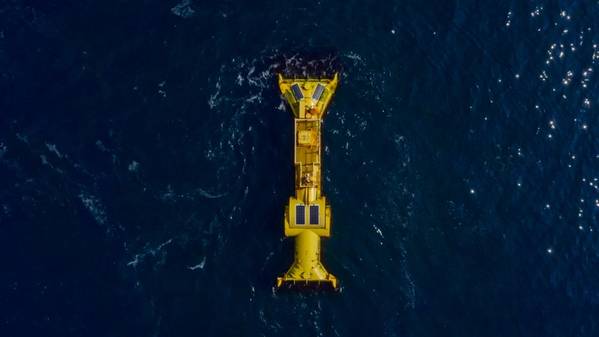
A groundbreaking ocean energy project, which has combined wave power with subsea energy storage to power subsea equipment, has now completed a 12-month test program at sea and will end this spring.
The $2.5 million (£2 million) Renewables for Subsea Power (RSP) project connected the Blue X wave energy converter – built by Edinburgh company Mocean Energy – with a Halo underwater battery storage system developed by Aberdeen intelligent energy management specialists, Verlume.
The industry-backed project, located 5 km east of Orkney mainland, has demonstrated how green technologies can be combined to provide reliable and continuous low carbon power and communications to subsea equipment, offering a cost-effective future alternative to umbilical cables, which are carbon intensive with long lead times to procure and install.
The final phase will start shortly and will include removing all equipment from the site, ahead of inspection and clean down onshore in Orkney and at Verlume’s operations facility in Dyce, Aberdeen.
In recent months, energy majors TotalEnergies and Shell Technology – Marine Renewable Program have joined project leads Mocean Energy and Verlume in the pan-industry initiative, alongside PTTEP, the Thai national oil company, Serica Energy, Harbour Energy, Baker Hughes, Transmark Subsea, and the Net Zero Technology Centre (NZTC).
“The test program has been a tremendous success. This phase of RSP was initially conceived as a four-month at-sea demonstration, but the quality of data and the robustness of our combined technologies as well as tremendous support from the oil majors, led us to extend the program to a full year. We now have increasing confidence in the reliability and the commercial potential of this system,” said Andy Martin, Chief Commercial Officer at Verlume.
“In the subsequent months, all the technology providers will examine critical components for wear and tear against performance metrics defined both individually and as a fully integrated power and communications ecosystem. A key part of this process will be assessing lessons learned and any future upgrades that may be required for a fully commercial system,” added Ian Crossland, Commercial Director at Mocean Energy.
The joint industry participants and developers are now evaluating near-term and future plans for further deployment or possible testing on live assets.
This may include deploying a similar project in Scottish waters, and / or a new project or projects overseas to further demonstrate how this combination of green technologies can enable reliable low carbon power and communications to subsea equipment in a live environment.